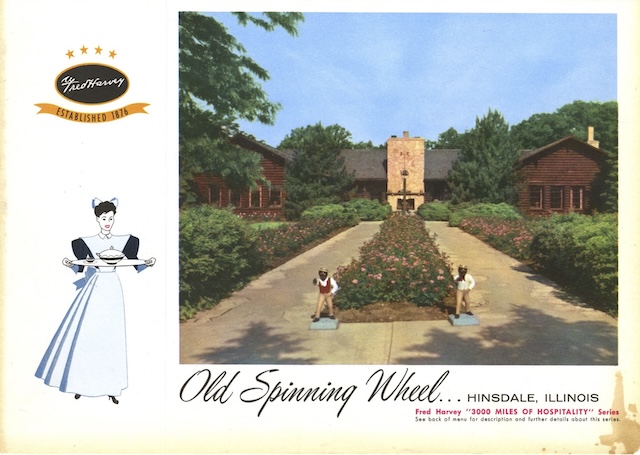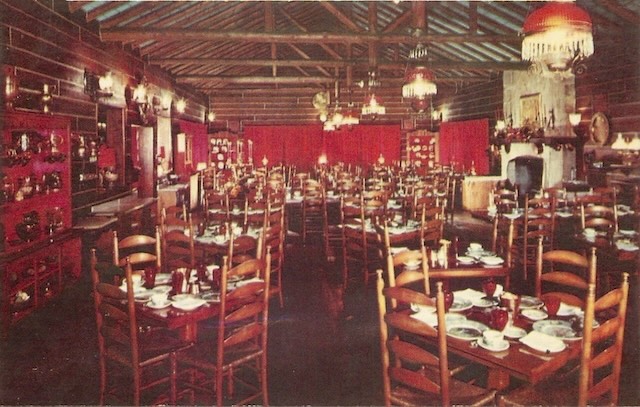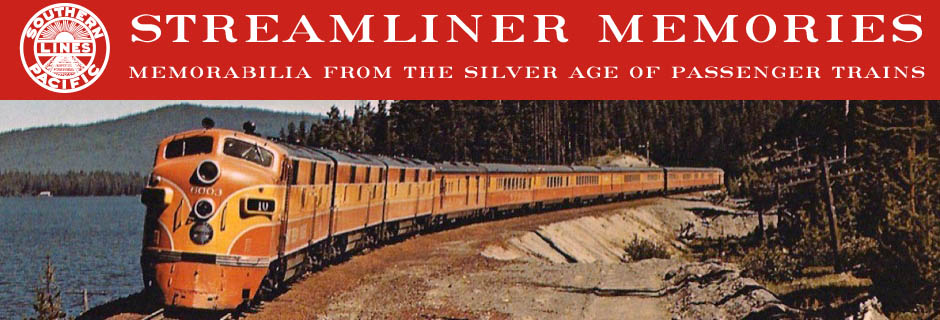In an effort to keep its restaurant mix current with the times, Fred Harvey began operating the Old Spinning Wheel, a popular restaurant in Hinsdale, a suburb of Chicago, in 1954. The photo on the cover of this menu doesn’t show it, but the 500-seat restaurant featured a rustic design filled with antiques including, as the name suggests, an old spinning wheel.
 Click image to download a 540-KB PDF of this menu.
Click image to download a 540-KB PDF of this menu.
The restaurant had been started in 1935 by Charles and Vacia Duncan, who opened a larger version on 20 acres of gardens in 1942. The years 1935 and 1942 don’t sound like auspicious times to open or expand a restaurant, but their formula was so successful that by 1952 it was considered one of the 50 most popular restaurants in the U.S. When the Duncan’s retired in 1954, they leased it to Fred Harvey, who used menus like this one to make people outside of the western Chicago suburbs aware of the location.
 Click image to download a 252-KB PDF of this postcard.
Click image to download a 252-KB PDF of this postcard.
The Old Spinning Wheel was automobile oriented rather than train oriented. Yet its rustic atmosphere and the period dress worn by its waitresses fit neatly into Fred Harvey’s nostalgic theme represented by the Harvey Girls movie that had been released just a few years before.
The cover photo on this menu is credited to James E. O’Brien. I can’t find any information about him, but he must have been a Chicago photographer as he also did the photo on the Harlequin Room menu.
Fred Harvey operated several other suburban restaurants. In 1959, a few years after Fred Harvey took over this restaurant, Illinois built the Illinois Tollway featuring five “oases” that allowed travelers to find food services without leaving the highway (and paying an extra toll). Demonstrating its effort to renew itself, Fred Harvey received the initial concession to operate the restaurants at these oases.

It’s interesting to note that when this card was printed, probably shortly after the 1954 management change, Hinsdale still had a manual telephone exchange (Hinsdale 80 was their number). Like many small towns that became big-city suburbs in the postwar era, the area was growing rapidly at that time, from a population in 1950 of nearly 8,700 to nearly 12,900 in 1960. Presumably the phone system was upgraded to dial before the end of the 50s.